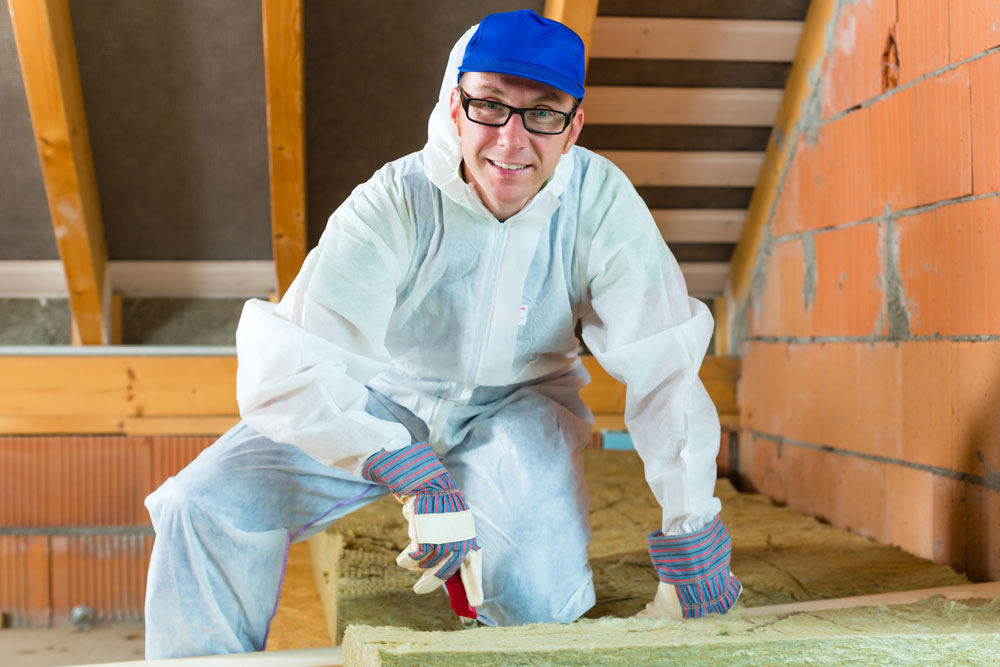
You've taken it from the top – literally. You've measured your attic insulation depth. You've taken our short and helpful quiz about whether your home could benefit from new insulation. And the verdict is clear: adding attic insulation in Las Vegas may be a new task for you, but you need insulation and you need it now.
Like other household tasks that are unfamiliar, adding attic insulation may seem a bit daunting. Your thought process might quickly revert to something along the lines of, “Do I really and truly need to spend the time adding attic insulation in Las Vegas?”
The short answer: Yes, you really and truly do, and First Quality Roofing & Insulation can help you every step of the way.
Understand how insulation works
It might help to view insulation in the same terms as you view the value of a light jacket on a cool fall night: It helps keep you warm – to insulate you from the cool air outdoors.
The scientific explanation about why adding attic insulation in Las Vegas is a bit longer, but it's as straightforward as First Quality's insulation quiz – and just as worthwhile to understand. Insulation involves three key processes:
- Conduction, which refers to the way heat moves through materials. (Think of when you've rested a metal spoon inside a pan of flaming stir-fry on your stove; the spoon gets heated, too.)
- Convection, which refers to the way heat circulates. (Think of how the upper level of your home is usually warmer than the lower levels; warmer and lighter air naturally rises while cooler and thicker air falls.)
- Radiation, which refers to the straight line from which heat travels and how this natural energy is absorbed by anything in its path. (Think of sitting directly in front of a space heater and absorbing the full power of the warmth it emits.)
Insulation blunts a basic air battle
You don't need a physics background to understand the two lessons that one full year in Las Vegas can impart: your home tries to maintain a “peace” in the battle between the existence of warm and cool air. Just as your home struggles to stay warm in the winter as air flows out of your attic, walls, windows and floors, it wages a similar battle in the summer as air flows out of the same vantage points.
Insulation answers this battle cry by going to work on those three processes, as the U.S. Department of Energy explains: “Most common insulation materials work by slowing conductive heat flow and -- to a lesser extent -- convective heat flow. Radiant barriers and reflective insulation systems work by reducing radiant heat gain. To be effective, the reflective surface must face an air space.”
Insulation, then, acts as an equalizer: it provides a resistant barrier to the flow of warm air. Adding attic insulation in Las Vegas affords other practical benefits, too, including:
- Lower utility bills – to the tune of an average of 15 percent, according to the U.S. Environmental Protection Agency
- Better humidity control and interior comfort
- A reduced risk of dirt, dust, pollen and other outdoor contaminants from entering your home
- Less outdoor noise
Take it from the top
Adding attic insulation in Las Vegas is a quick process – involving one part visual inspection and one part measuring – before the actual installation. Let your efforts be guided by three basic tips:
- If you can see the floor joints, you probably need more insulation. Ideally, insulation should be at or above your floor joists. It is important that the insulation be evenly distributed with no low spots; sometimes there is enough insulation in the middle of the attic and very little along the eaves.
- If you cannot see the floor joints, then get your measuring tape ready. With R-38 insulation, you should strive for an attic insulation depth of between 10 and 14 inches.
- While the most common types of insulation include rolls and fiberglass batts, loose-fill, rigid foam and foam-in-place insulation, you do not have to stick with the type you currently have in your attic. In other words, you can put batts on top of loose fill – or the other way around. Many homeowners find that fiberglass is the simplest type for them to install. That's fine, as long as you lay the second layer over and perpendicular to the first layer for the best insulating protection.
It's true: adding attic insulation in Las Vegas can be an easy process. There may be challenges along the way, as well as some unexpected issues, such as the discovery of moisture or water damage in your attic. Just remember that First Quality Roofing & Insulation is here to assist you.
Contact us today at 702.262.7847 to book your insulation appointment or to learn more about adding attic insulation.

















